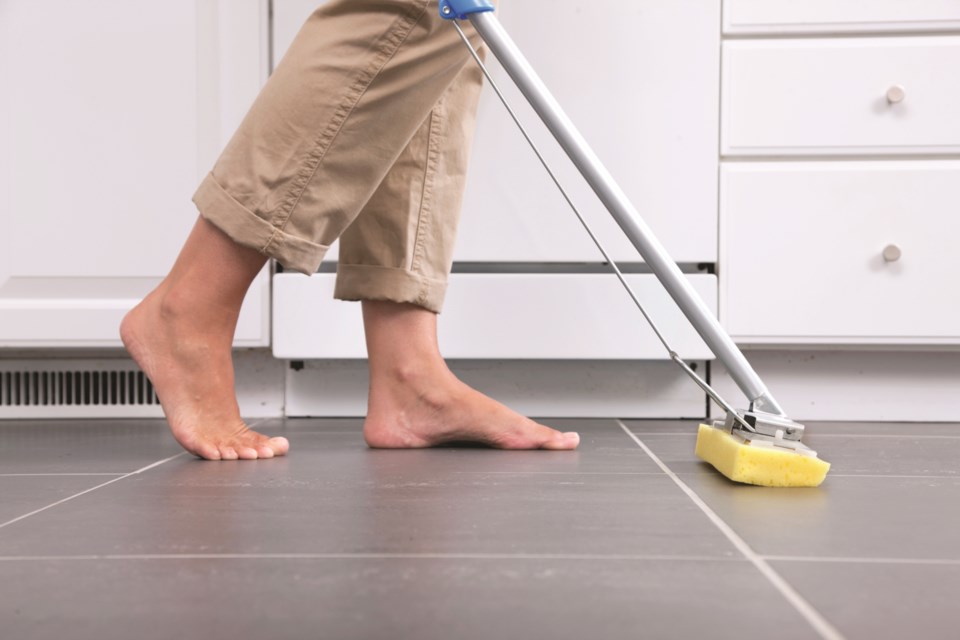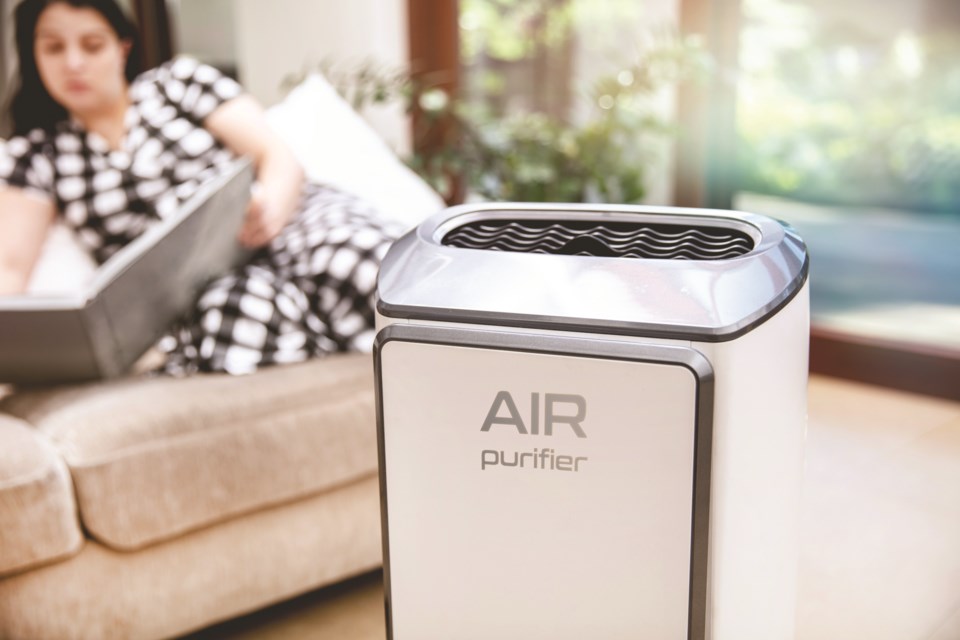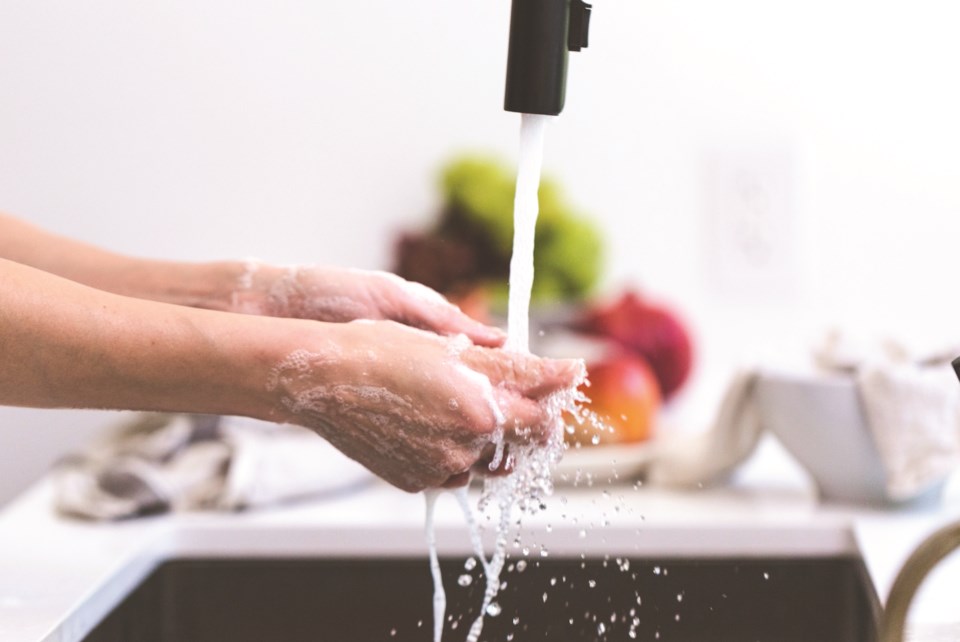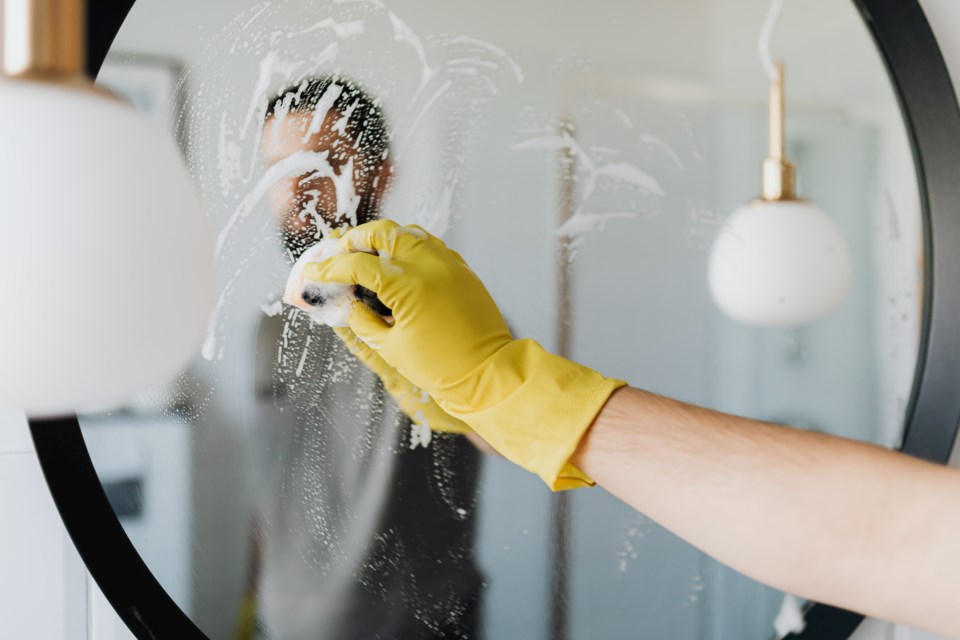Since the COVID-19 pandemic uprooted our way of life a year ago, Canadians have taken cleaning and disinfecting their homes to a new level. Early into the pandemic, this newfound cleaning frenzy forced retailers to set purchase limits per customer, as disinfecting wipes and similar products became a rare find in many stores.
But growing evidence suggests we are targeting the wrong areas in our quest to avoid getting sick.
In February 2020, the World Health Organization (WHO) issued a report stating the virus that causes COVID-19 spreads via contaminated surfaces, known as fomites. The WHO advised that “COVID-19 is transmitted via droplets and fomites during close unprotected contact between an infector and infectee.”
The findings from a laboratory study released in March 2020 seemed to confirm fomite transmission when it found the virus could survive on some surfaces for up to 72 hours after application. The findings set off a wave of media coverage, declaring fomites as the main target in the battle against COVID-19. Two months into the pandemic, health agencies worldwide – including the WHO – recommended stringent cleaning and disinfecting of surfaces inside the home and in public settings.
However, the testing conditions never reflected those outside the lab setting, which prompted some to suggest the resulting findings were unrealistic. Emanuel Goldman, a microbiologist at Rutgers New Jersey Medical School, stated "a clinically significant risk" of transmission by fomites was "assumed on the basis of studies that have little resemblance to real-life scenarios.” Goldman found the concentration of virus administered in most studies was “a lot higher than those in droplets in real-life situations, with the amount of virus actually deposited on surfaces likely to be several orders of magnitude smaller.”
 While not a bad idea, growing evidence suggests strict and frequent sanitization of surfaces – or "fomites" – might not be the best way to protect individuals against COVID-19, given the virus is more transmissible via airborne particulates and respiratory dropulets.
While not a bad idea, growing evidence suggests strict and frequent sanitization of surfaces – or "fomites" – might not be the best way to protect individuals against COVID-19, given the virus is more transmissible via airborne particulates and respiratory dropulets. In his commentary for The Lancet Infectious Diseases, Goldman argued the chance of transmission through inanimate surfaces was actually very small. He suggested fomite transmission occurs only in instances where a surface has been directly coughed or sneezed on by an infected person and that surface is touched by another individual within an hour or two.
That same month, aerosol scientists Lidia Morawska and Donald Milton published a commentary in the journal Clinical Infectious Diseases. The article outlined evidence of the virus's airborne transmission and urged public-health agencies to both acknowledge this form of transmission and implement preventative measures. An international group of 237 other clinicians, infectious-disease physicians, epidemiologists, engineers and aerosol scientists supported the publication.
In the following months, additional studies came to similar conclusions, indicating fomite transmission is very rare. Research now shows the virus is most commonly spread through airborne transmission, which means the focus of cleaning efforts should be on ventilation, rather than surfaces.
The WHO updated its guidance in October 2020, saying transmission occurred "after infected people sneeze, cough on or touch surfaces or objects, such as tables, doorknobs and handrails."
In January 2021, nature.com reported a WHO spokesperson said there is "limited evidence of transmission through fomites." Yet, the organization continues to promote surface disinfection as a means of reducing COVID-19 transmission.
An editorial published by nature.com in February 2021, said the lack of clarity surrounding transmission sources of COVID-19 “has serious implications.”
“People and organizations continue to prioritize costly disinfection efforts when they could be putting more resources into emphasizing the importance of masks and investigating measures to improve ventilation," the piece stated. “The latter will be more complex but could make more of a difference.”
While it is now publicly accepted that airborne transmission of the virus presents a greater risk than that of fomites, the messaging from political and health authorities to disinfect surfaces remains prevalent. As research and recommendations continue to be undertaken and updated, Airdronians are left with little option but to follow the advice outlined by public-health agencies.
Health Canada now advises the virus that causes COVID-19 spreads "through respiratory droplets and aerosols created when an infected person coughs, sneezes, sings, shouts or talks." However, erring on the side of caution, it continues to warn fomite transmission is possible.
The government suggests the virus is “most likely to be on surfaces you frequently touch with your hands." It recommends frequent cleaning and disinfecting of high-touch surfaces in the home. These areas include tables, toilets, countertops, light switches, laundry hampers, remotes, phones and electronics, and door handles.
 According to Health Canada, proper ventilation is one way to minimize the risk of COVID-19 spread in an indoor setting.
According to Health Canada, proper ventilation is one way to minimize the risk of COVID-19 spread in an indoor setting.Health Canada cleaning recommendations
According to Health Canada, Coronaviruses are one of the easiest types of viruses to kill with the appropriate disinfectant when used according to the label directions. The health agency encourages residents to clean surfaces with soap and water before disinfecting, or use products that clean and disinfect all at once.
A list of approved hard-surface disinfectants and hand sanitizers can be found at canada.ca by searching “hard surface disinfectants.”
The COVID-19: Cleaning and disinfecting page recommends a diluted bleach solution, if supply issues limit the availability of approved disinfectants. The solution is made by diluting five millilitres (mL), or one teaspoon (tsp), of bleach in 250 mL (or one cup) of water. For larger batches, the ratio increases to 20 mL (four tsp) or bleach to one litre (four cups) of water.
“The bleach should always be poured into the water, never the other way around,” warns Health Canada.
“Only make as much diluted bleach as you will need at one time. Do not store any leftover diluted bleach in a container for future use, as it may be mistakenly used for another purpose and this could lead to dangerous incidents.”
Best practices
Damp cleaning with wet mops and cloths is preferred over dusting and sweeping because damp methods are less likely to distribute virus droplets into the air.
“Put used disposable cleaning items, such as mop heads and cloths in a lined garbage bin before throwing them out with regular waste,” advises Health Canada. “Reusable cleaning items can be washed using regular laundry soap and hot water (60 to 90 C).”
Wearing gloves while cleaning is recommended, followed by hand-washing with soap and water for at least 20 seconds once the gloves are taken off. If soap and water are not available, an alcohol-based hand sanitizer containing at least 60 per cent alcohol is advised.
 Washing hands regularly is still one of the best ways to prevent COVID-19 spread among people.
Washing hands regularly is still one of the best ways to prevent COVID-19 spread among people.Decontamination
Health Canada continues to urge residents to "clean and disinfect each time someone returns home from having close contact with other people or high-touch surfaces.”
While quarantining groceries and other purchases is unnecessary, items delivered to your home should be wiped down “with a suitable disinfectant." Those handling the package(s) should wash their hands after handling the item(s) and the packaging. When placing an order, ask for contactless delivery to have items left on the doorstep. If contactless delivery is not possible, maintain two metres of space between yourself and the delivery person.
Safety tips for in-store shopping include wearing a mask, applying hand sanitizer upon entrance of a store, bringing reusable bags, maintaining two metres of distance from others, using contactless payment and applying hand sanitizer after exiting the store. Additional recommendations include avoiding touching eyes, mouth, nose and items not being purchased. Shoppers should wash their hands upon returning home.
Laundry and soft surfaces
“Put possibly exposed laundry, including non-medical masks and face coverings, into a container with a plastic liner as soon as you return home,” advises Health Canada. “You can combine your exposed laundry with other (non-exposed) laundry and wash it together.”
Regular laundry detergent used with the machine set to “hot” is acceptable and laundry should be allowed to dry thoroughly. Items should be put “directly into the washing machine, being careful not to agitate it.” Hand-washing should follow, using soap and water warmed to 60 to 90 C.
“Clean soft surfaces, like carpeted floors, rugs and drapes, with soap and water or a cleaner labelled for use with that item,” according to Health Canada.
Electronics
Though the government recommends following the manufacturer's instructions to clean regularly-used electronics, some people are relying on UV systems to "disinfect" these items. However, in November 2020, Health Canada issued a safety alert warning of the risks of using ultraviolet (UV) lights and wands that make unproven claims to disinfect against the COVID-19 virus.
“In order to make claims that a UV light or wand can protect against COVID-19, a manufacturer must hold evidence to demonstrate that their product works as claimed,” the alert stated. “Health Canada has not yet received any evidence to demonstrate that UV lights can protect specifically against COVID-19.”
Selling or advertising health products that make false or misleading claims is illegal. Health Canada directed advertisers of UV products claiming to disinfect against the virus to “immediately stop all illegal advertising, including on websites.”
“If they can withstand the use of liquids for disinfection, high-touch electronic devices may be disinfected with 70 per cent alcohol at least daily,” Health Canada advised.
Ventilation and air purification
Health Canada advised that "proper ventilation is another way to help prevent the spread of COVID-19." It recommends routine maintenance of HVAC systems and changing the filter as recommended by the manufacturer. Additional advice includes running the system fan continuously at a low speed and consulting a professional to ensure it works properly.
At low speeds, run kitchen or bathroom exhaust fans that vent to the outside.
"This will move and filter the air without creating an unwanted draft,” Health Canada stated. “If your interior exhaust fans aren’t vented to the outside, they may just recirculate inside air without effective filters.”
While the effectiveness of air purifiers in transmission-prevention remains unclear, their usefulness has not been ruled out.
"Air purifiers could be considered additional protection in situations where enhancing natural or mechanical ventilation and physical distancing aren't possible.”



